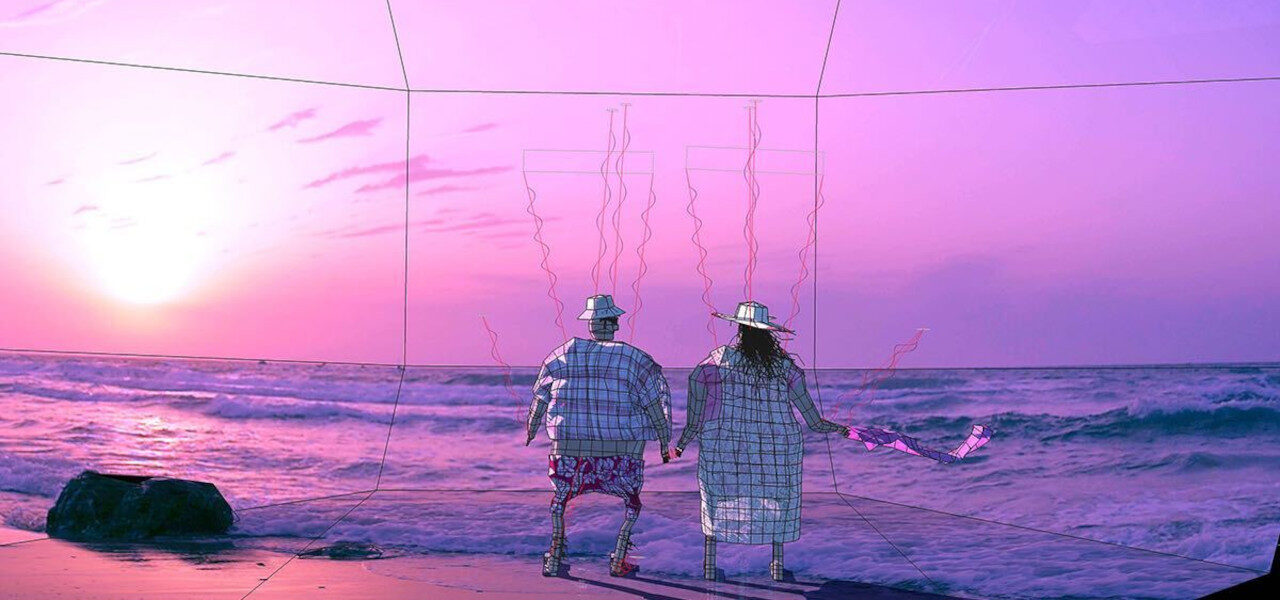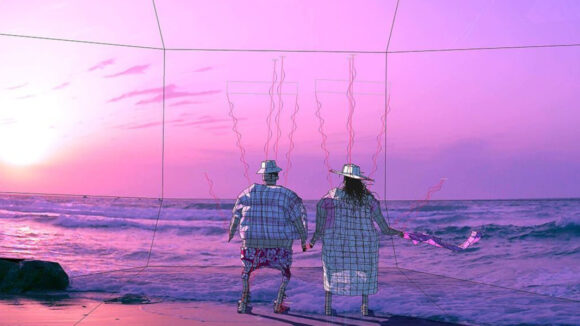

‘You Do Art Because Nothing Else Makes Sense’: Nikita Diakur’s Fredrikstad Masterclass
By Kévin Giraud | 11/10/2025 8:54 am |
“Why do art, when everything around us seems to be falling apart?”
In a one-of-a-kind masterclass, indie filmmaker Nikita Diakur shared his own answers to this question with the Fredrikstad Animation Festival audience this weekend, making them laugh, marvel, and reflect on art itself.
Three years ago, when we profiled Diakur as part of our [Know Your Indie Filmmaker](…


‘You Do Art Because Nothing Else Makes Sense’: Nikita Diakur’s Fredrikstad Masterclass
By Kévin Giraud | 11/10/2025 8:54 am |
“Why do art, when everything around us seems to be falling apart?”
In a one-of-a-kind masterclass, indie filmmaker Nikita Diakur shared his own answers to this question with the Fredrikstad Animation Festival audience this weekend, making them laugh, marvel, and reflect on art itself.
Three years ago, when we profiled Diakur as part of our Know Your Indie Filmmaker series, it was already clear that his work explored the boundaries of computer-driven animation while crafting a distinct style of chaotic settings, quirky characters, and laughable situations. Since 2022, the animation industry has changed, yet Diakur still retains his own unique approach to indie filmmaking.
“To me, what is important is that you have got to love doing it, despite everything,” explained the Russian-born, German-based director, in what turned out to be more of a singular, cathartic moment than a regular behind-the-scenes masterclass.
While delivering a rather down-to-earth, monotonous, and sometimes pessimistic speech, Diakur had the audience cracking up at his weird, delightful clips — mirroring his own filmmaking style and overall state of mind. The 25-minute presentation was followed by a half-hour conversation with the Fredrikstad audience, hailing from all the Nordic-Baltic countries, for the 29th edition of this major animation event.
“Before going into computer animation, I was trying quite a lot of different art forms,” recalled Diakur when asked about his early career. “I went to a foundation course in England, which was still cheap back then, and I could experiment with everything from design, theater, sculpture, and painting, and I was doing all that. Then I went into graphics, and that’s when I started doing films.”
The medium stuck with him because of its capacity to tell something over time and to craft a story from a timeline perspective, with a certain magic to it. It was a magical sense of creation that Diakur found even more in CG animation, and that he has been pursuing ever since.
“You do art because you have to, because nothing else makes sense. But you also do it to connect, to share, to be with friends, and to find new friends,” continued Diakur — a statement he returned to during the long Q&A that followed his presentation. “My animation helped me build a healthy network with people I care about, people who do help. And this also helps you to carry on.”
On Ugly, Diakur’s first short, he started the project solo before bringing on a team as it grew and the Kickstarter campaign unfolded. At the time, all of these artists were working part-time and pursuing their artistic projects on the side. “Little by little, I formed connections with other filmmakers, working with Gerhard Funk and others on this project and some of the bigger ones, and we ended up being this little core team, always finding new people.”
Meeting new people and finding new ways to create is at the core of Diakur’s work, along with striving to surprise others—and to surprise himself in the process. It’s an iterative way of making films that he started in Ugly and continued in his later short Backflip, but that goes all the way back to his childhood. “When you start creating and doing art, you do it because you like it. And this is exactly what I did as a kid, so I’m trying to go back toward the moment it all started, drawing on why you do things for the very first time and finding ways in there to stay motivated, and aim for the unexpected.”
Expanding on his process, Diakur explained that many of his clips are outtakes from a film project that just took too much attention away from the main plot. “On Ugly, which we storyboarded beforehand, I kind of got lost sometimes. One scene with the moped-powered carousel was part of the film, but I couldn’t leave it in there because it would drag attention away from the actual story. Because I cannot just throw it out, my way to escape it is to outsource it and drop it outside as part of a behind-the-scenes or clip.” A clip Diakur then posts on social media, which he uses as a sort of archive—a trace of these “memorable failures.”
Embracing this “jump in cold waters” and the uncertainty of success, as Diakur put it, can be seen in all his works. From short experiments to social media clips, the self-proclaimed “ugly filmmaker” loves failure and welcomes it. “To me, the process is more important than both the starting point and the result. I think we have a tendency to overvalue what is a good starting point. On my part, I prefer to stick with cheap tools, embracing manual work, and preferring DIY methods to build and experiment with the medium.”
Diving deeper into his process, Diakur explained that he has been working with Cinema 4D for a long time but is increasingly turning to Blender for his future work. “I started working with the software because I got free access as a beta tester for the program, but then they threw me out because I didn’t report any bugs—I was just using the tool. Today, I think I would just go to Blender because it’s free, and it’s pretty much the same stuff. To me, choosing the software you use in the beginning is especially important because you dedicate so much time learning it.”
Now working on his art full-time, the indie filmmaker emphasized how lucky he feels to be able to create freely today. “Because I worked part-time in the television industry, I managed to buy a small apartment and pay the mortgage, which helps. I also moved to Saxony, where there is good regional funding for short films, but now I’m kind of over it since they want me to make a feature film and don’t really fund long-time short film directors.”
Today, Diakur lobbies with other short filmmakers to push for more funding for this format. “For the public institutions, feature film is the real business model, even though they don’t make any money with arthouse feature films as well. So it’s very strange, but I’m not losing hope.”
For younger filmmakers and students, many of whom were present and eager to follow in his footsteps, Diakur underlined that education was key to his success, although he wasn’t sure he would recommend animation studies today. “I would at least be really smart about it. Back when I started, it was quite cheap, but now some schools would have you pay tens of thousands of dollars for private studies. To be honest, I would probably not study; I would learn everything by myself and find teams to work with and to create. Finding a side job that is not too creatively demanding is also a good way to do it, and maybe sell digital art, which can be a little bit of a help.”
As the masterclass was about to wrap, the hot-button topic of generative AI was brought up, and Diakur’s take on it proved quite inspiring. “To me, I wish it would not take away the process from the artists, because as I said earlier, it’s very precious to me to spend time with my work. For me, taking away the ‘doing’ of the films will also take away the joy of making them, and this is what I’m looking for when I create.”
From such a singular filmmaker, those words definitely resonated with the audience. Animation is all about the craft and the humans behind it. And in Fredrikstad, those humans really resonated with Diakur’s work.